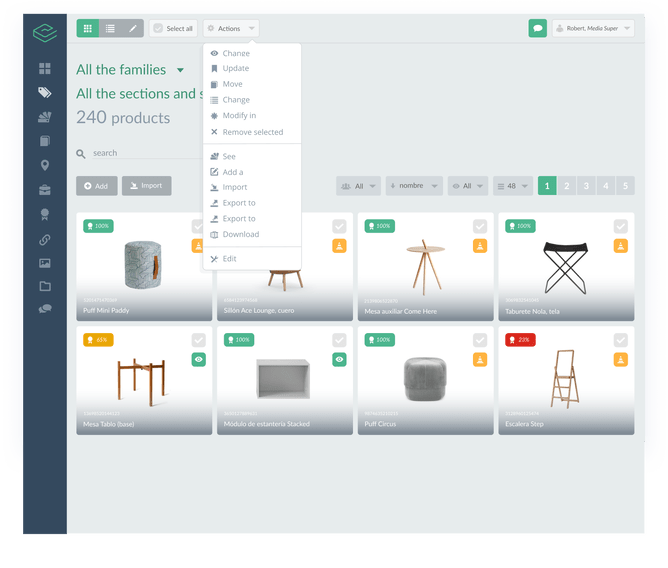PIM (Product Information Management) systems help companies to centralize all their content, improve it, and share it more quickly – distributing it over all the channels of a complex strategy, like printed catalogues, online shops, and marketplaces.
There are so many changes in the marketplace and how consumers are now buying their goods and services. Businesses are closing physical stores, moving online, offering free pickup services, providing deliveries. They need to digitalize their catalogue management, sales process, and supply chains, connecting the data reliably and securely between manufacturers, distributors, warehouses, retailers, and consumers.
Advantages of using a PIM solution
Centralisation - A PIM solution includes all the product content in a single place, allowing change logs to be kept, instant updates to be applied in several places at once, and different types of access and editing permissions to be set.
With a PIM system, manufacturers and sellers can standardize:
- Product titles and descriptions (including in different languages)
- Product variants
- Images
- Sizes and informational sizing charts
- Manufacturing materials
- Inventory
- Points of sale
- Cross-sell products (accessories, sets, complementary products, etc.)
Keep catalogues up to date - With a PIM solution, it is easier to update catalogues and add new SKUs and product data.
Omnichannel/Multi-channel approach to consumer buying - A omnichannel approach is the new retail buzzword, and is focused on the customer experience - where brands offer a browsing and buying experience from their catalogue that can be carried out from any device and from anywhere, combining different options eg consumers can buy online and pick up the purchase at the shop, or see a picture on Instagram and then is able to access the complete product page in a mobile phone app. A multi-channel approach is more traditional (but still very relevant!) and revolves around the product (rather than the customer), with each channel more “siloed” eg a physical store and an online store, with each channel having its own stock and marketing strategy. Regardless of the retail approach, a PIM solution will provide effective connectors to the different channels.
B2B integration - Product manufacturers can improve their management of catalogues, and supply and distribution data with PIM technology. Having digitalized product information that is always on hand is essential for these new business practices.
Why you need a PIM
A streamlined response is the number-one requirement to get through these difficult times of change and increases in digitalization. A PIM solution is an essential form of support for digitalizing companies, strengthening productivity, and improving the consumer’s buying experience.
(excerpts from SalesLayer blog 9/9/20)
Ask us how a PIM solution can help your business.


